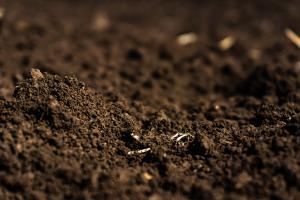Why Are My Snake Plant Leaves Curling
Snake plants, also known as Sansevieria, are popular houseplants for their hardy nature and air purifying capabilities. However, if you notice the leaves of your snake plant curling, it could be a sign of an issue. In this article, we will explore why snake plant leaves curl and how to fix the problem.
Lack of Water
One of the most common reasons for snake plant leaf curling is a lack of water. Snake plants require infrequent watering, and overwatering can lead to root rot, while underwatering can cause the leaves to curl. If you notice the soil has become completely dry or the pot feels light when you lift it, it's time to water your snake plant. Water the plant thoroughly, allowing excess water to drain out of the bottom of the pot, and don't water again until the top inch of soil is dry to the touch.
Low Humidity
Snake plants are native to dry, arid regions of Africa, and do not require high humidity to thrive. However, if the air in your home is particularly dry, it can cause the leaves to curl. To remedy this, you can place a tray of water near the plant, mist the leaves with water, or invest in a humidifier.
Temperature Extremes
Snake plants are sensitive to extreme temperatures, both hot and cold. If your plant is placed near a drafty window or a heat source, it can cause the leaves to curl. Make sure your snake plant is kept in a location with consistent, moderate temperatures. If you live in a particularly cold or hot climate, you may need to move your snake plant to a more temperature-controlled room.
Pest Infestations
Pests such as spider mites and mealybugs can cause snake plant leaves to curl. These pests feed on the plant's sap, causing the leaves to wither and curl. If you suspect a pest infestation, inspect the plant for small webs or white, cotton-like masses on the leaves or stem. You can treat pest infestations with neem oil or insecticidal soap, applied according to package instructions.
Nutrient Deficiencies
If your snake plant isn't getting the nutrients it needs, it can cause the leaves to curl. A lack of nitrogen, potassium, or magnesium can cause the leaves to yellow and curl. To remedy this issue, you can fertilize your snake plant with a balanced fertilizer, applied according to package instructions.
In conclusion, there are several reasons why snake plant leaves can curl, including lack of water, low humidity, temperature extremes, pest infestations, and nutrient deficiencies. By identifying the problem and taking the appropriate action, you can help your snake plant thrive and keep its leaves lush and healthy.

 how many times do yo...
how many times do yo... how many planted tre...
how many planted tre... how many pine trees ...
how many pine trees ... how many pecan trees...
how many pecan trees... how many plants comp...
how many plants comp... how many plants can ...
how many plants can ... how many plants and ...
how many plants and ... how many pepper plan...
how many pepper plan...





























